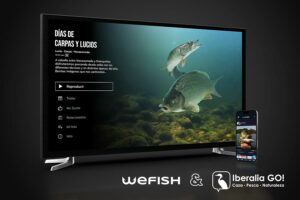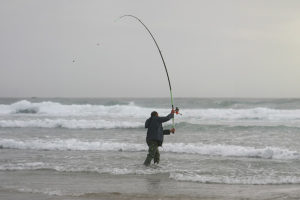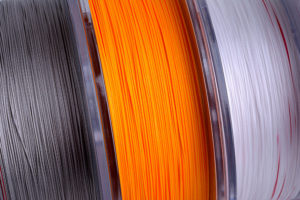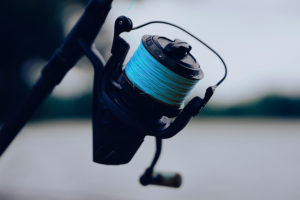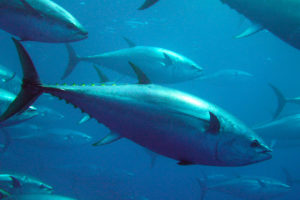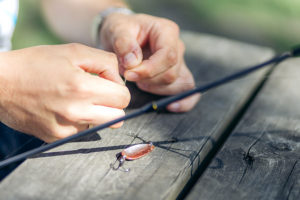El mundo de la pesca es un mundo complejo con todo tipo de modalidades y técnicas, que si no conocemos podemos perdernos en él o no saber cómo empezar. Por ello en este artículo encontrarás toda la información necesaria para introducirte en el mundo del surfcasting, modalidad conocida por la paz y la tranquilidad que genera en el pescador. Encontrarás desde cómo realizar la modalidad, pasando por los materiales necesarios, especies más capturadas y terminando por una serie de consejos y de trucos para principiantes.
Cómo se realiza esta modalidad
El surfcasting se ha convertido en una de las modalidades de pesca más extendidas a nivel mundial y el cual se realiza en la orilla de algunas costas. Por esto el surfcasting se considera una modalidad de playa.
Esta modalidad suele gustar tanto y convertirse en alguna de las favoritas de los pescadores ya que rebosa tranquilidad y desasosiego. Y es que la tranquilidad y la relajación es algo que pueda escasear a la hora de practicar estas modalidades.
La traducción de esta modalidad al castellano sería ‘’lanzado al oleaje’’, ya que al realizarse en la orilla es donde las especies van a alimentarse principalmente también es donde rompen las olas y generan el espumeo que tanto llama la atención a algunas especies.
A pesar de que se trate una modalidad que se realiza en las orillas, también se practica habitualmente en muelles o playas con el mar en total calma. Algo muy importante en esta modalidad es que el fondo de la playa ha de ser arenoso.
Hay que destacar que dentro de esta modalidad existen diferentes tipos de técnicas:
- Tradicional, es la más sencilla, cómoda y extendida simplemente se trata de lanzar la línea de la caña, el plomo y el anzuelo por encima de su cabeza. Hay que extender la caña con fuerza y luego pararla de forma brusca para que el anzuelo llegue lo más lejos posible.
- Otg, en esta el plomo se apoya en la espalda del pescador estando este de cara al mar, se trata de hacer un lanzamiento con mucha fuerza y una vez en el aire hacer un giro combinado, mientras llevamos la caña hacia arriba simultáneamente. Debido a la alta presión a la que se somete la caña es necesario que esté fabricada con un material lo suficientemente resistente como para soportarlo.
- Péndulo, de todas las técnicas esta es la que más cualificación requiere, lo cual no quiere decir que sea la más complicada. En esta el pescador se encuentra de espaldas al mar y comienza a oscilar el plomo sobre la caña. Una vez este ha cogido inercia hay que realizar un giro coordinado de cuerpo y caña para optimizar el lanzamiento y que llegue correctamente al mar.

Cuáles son las mejores épocas del año
Por lo general las mejores temporadas del año para practicarlas son primavera y otoño, pero puede practicarse durante todo el año ya que siempre hay especies que en los meses previos o posteriores no estaban activos.
Existen numerosas especies que se pueden capturar con esta modalidad y a cada una de ellas les gusta el agua con condiciones climatológicas diferentes, a unas les gusta el agua con bajas temperaturas a otras a alta temperatura, a unas les gusta el mar con oleaje y a otras el agua tranquila, etc.
Por ello no podemos especificar una época exacta para poder realizar esta modalidad.
Las especies más comunes de surfcasting
Otra de las cuestiones más importantes a la hora de querer prácticar una modalidad de pesca son las especies que se pueden capturar practicando la misma.
Por ello aquí tenéis un listado con algunas de ellas:
- CORVINATA Abr-Nov
- SARGO Oct-Mar
- DORADA Mar-Nov
- ANJOVA May-Nov
- BAILA Todo el año
- CABALLA Finales de primavera inicios de otoño
- LENGUADO May-Dic
- ROBALO Oct-Mar
- HERRERA Mar-Ago
- MOJARRA Oct-Abr
Algo a tener en cuenta de todas estas especies es que todas ellas remueven en fondo de arena para encontrar comida, y es en este momento donde entran en juego todos los los aparejos y cebos para poder tener una buena captura.
Cuál es el mejor material para surfcasting
Uno de los aspectos más importantes en cualquier modalidad de pesca son los materiales para su realización, así que os dejamos con una lista de especificaciones de materiales acordes a esta modalidad:
Normalmente, en surfcasting se utilizan cañas con una longitud de entre 4 y 5 m para mantener la línea por encima de las olas. Si te inicias en esta técnica, te recomendamos cañas que no superen los 4,5 m, pues las cañas más largas requieren un manejo más técnico.
La cañas deben ser suficientemente potentes para propulsar montajes pesados o cebos voluminosos.
Una de las cañas más recomendadas para esta modalidad es la SURFCASTING SYMBIOS-900 420 HYBRID, que funciona muy bien.
El carrete de surfcasting tiene que ser sólido para no fallarte o extraviarse en plena picada.
Otra peculiaridad del carrete de surfcasting es la bobina «long cast» o de gran capacidad (300 – 400 m) para los lanzados a gran distancia. La reserva de sedal puede revelarse inestimable cuando una gran presa da un tirón fuerte.
Uno de los carretes más recomendados es el de ADONIS 7000.
- SOPORTE DE CAÑA
Es un accesorio indispensable para las salidas de pesca al surfcasting. El soporte mantiene la caña recta frente al mar para que la línea quede tensa por encima de las olas.
La pica se clava fácilmente y sirve para anclar la caña y que quede vertical. Es el soporte ideal para cambiar rápidamente de punto de pesca.
El trípode es adecuado para las playas de piedras o la costa mediterránea, ya que al no haber mareas, no es necesario desplazar el material en acción de pesca.
- PLOMOS
El plomo propulsa el montaje y, una vez dentro del agua, lo mantiene en el fondo. Existen múltiples tipos de plomos en función de la potencia de la corriente y del viento:
Todos los plomos están disponibles en diferentes gramajes. Un plomo de 110 g es polivalente para iniciarse en el surfcasting.
- HILOS
En cuanto a hilos para surfcasting recientemente estoy montando el Symbios cereza que gracias a su color rojo me ayuda a invisibilizar el hilo debajo del agua y a hacerlo más visible fuera de ella para que pueda verse mejor.
- CEBOS
A lo largo de nuestras costas, podemos encontrar gran cantidad de cebos muy eficaces. Las lombrices son cebos polivalentes y eficaces para los depredadores de mar y otros peces planos, aunque no son selectivos si quieres buscar grandes capturas. Los peces pequeños, como el pez aguja o el eperlano, son cebos perfectos para pescar grandes depredadores de mar, como la lubina.
Los cefalópodos (pulpo, calamar, sepia…) son irresistibles para los grandes depredadores del mar. Muchos pescadores consideran que son los mejores cebos para el surfcasting.
Ahora ya tienes todas las claves para elegir bien tu material de surfcasting. Solo te falta pasar a la práctica para progresar y descubrir todas las satisfacciones que te puede proporcionar esta modalidad de pesca.

Trucos y consejos para novatos
Ya hemos explicado las diferentes técnicas, materiales, especies, etc. pero a pesar de esto es necesario tener en cuenta una serie de recomendaciones para que todo salga tal como lo habías planeado, así que aquí hay algunos de los consejos a tener en cuenta:
- Practicar el lanzamiento sin plomo. Si eres principiante en esta modalidad es recomendable practicar los lanzamientos sin el plomo usando en vez de este otro objeto como una pelota pequeña con un peso semejante al del plomo, una pelota de tenis por ejemplo, hasta que consigas dominar el estilo.
- Proteger el dedo que sujeta la línea. Para que el lanzamiento sea efectivo es necesario sujetar la línea. Al realizar el lanzamiento, la potencia y la velocidad del tiro puede provocar cortes a la hora de sujetar la línea. Por ello es recomendable protegerse la mano para no sufrir estas heridas.
- Elegir una zona ideal. Es necesario y prudente colocarse en zonas libres de bañistas y paseantes. Ya que el agua estará más tranquila y será más sencillo que acudan los peces, además si el plomo impacta en una persona puede ocasionar daños bastante graves.
- Probar con diferentes distancias y profundidades. Ya que es imposible saber a qué profundidad se encuentran los bancos de peces es recomendable tantear los fondos probando distintas distancias y profundidades. Como un consejo extra, si las aguas son poco profundas es conveniente adelantar la posición.
- Paciencia. Esto es una cualidad de la cual hay que disponer para realizar esta modalidad, ya que todo llega a su tiempo. Existen pescadores que por falta de paciencia retiran el cebo antes de tiempo, ya que posiblemente notes como los peces pican del cebo pero sin llegar a engancharse, por ello en ese momento NO hay que retirar la caña aún. Lo idea el apartar la caña cuando se empiece a doblar, una señal inequívoca de que un pez ha picado.
- ¡Observa, aprende y NUNCA te rindas! Esta claro que en la pesca nunca hay que tirar la toalla, pero cuando nos iniciamos en una modalidad nueva siempre nos surgen las dudas de si estaremos haciendo bien las cosas. Algo que suele ayudar mucho es rodearse de gente que practique esa modalidad para poder aprender de ellos o apuntarse a un club especializado en esa modalidad.
Esto ha sido una guía introductoria a la modalidad de surfcasting que ha sido posible gracias al usuario de WeFish Melo, si te ha gustado estate atento ya que iremos añadiendo más guías como esta pero de otras modalidades de pesca. Descarga WeFish gratis para aprender más sobre el surfcasting, iniciarte en esta modalidad y planificar tus jornadas de pesca.












